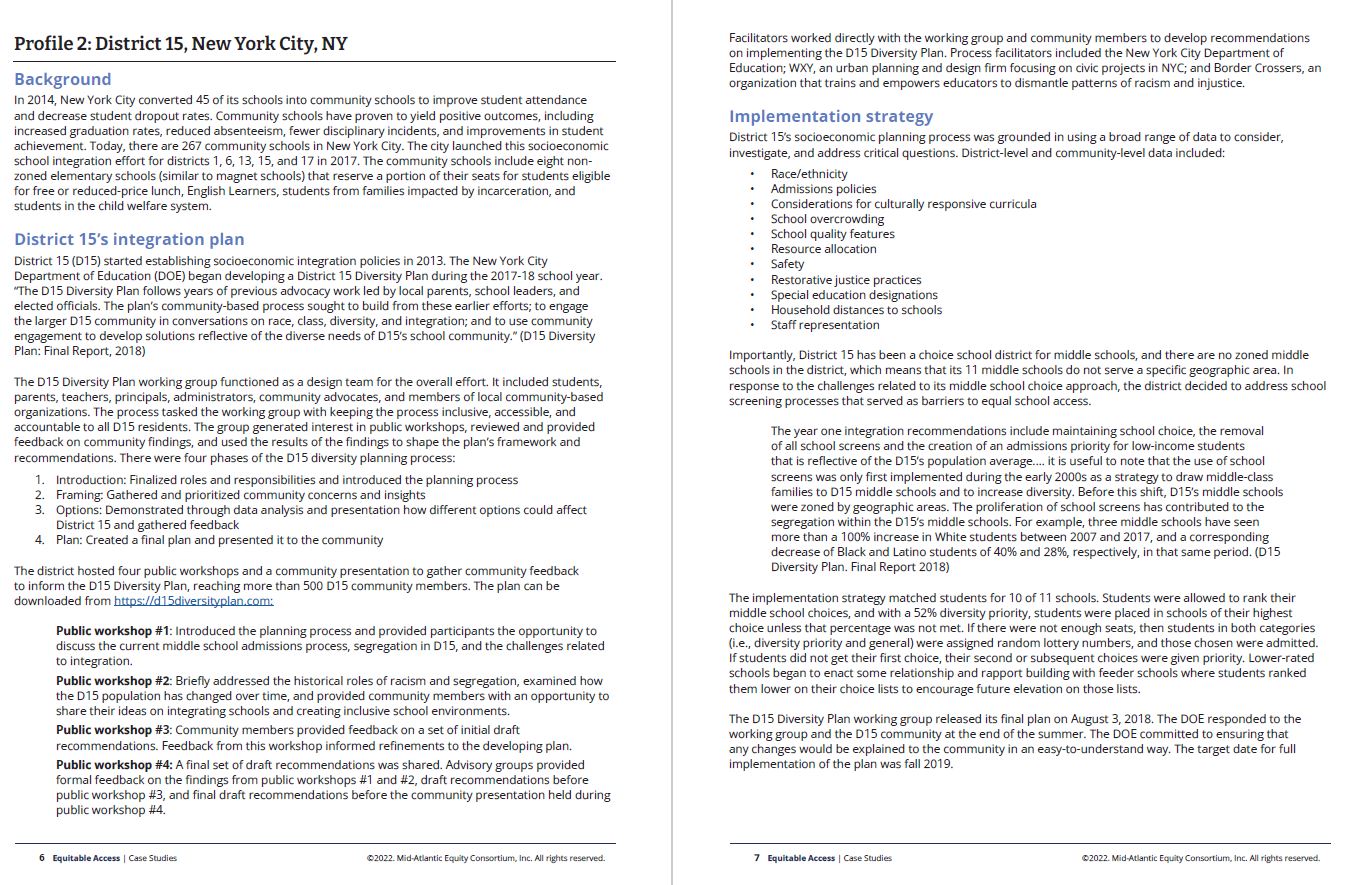
In this guide you will find:
- An overview of socioeconomic integration policies that address racial isolation
- Examples from New York, North Carolina, Kentucky, and Texas
- Detailed information on each socioeconomic integration plan and their results
About Equitable Access: Case studies on reducing racial isolation through socioeconomic integration:
- While U.S. public education is experiencing an increase in student body size and diversity, there is also an increase in racial and socioeconomic isolation. Participation rates among White students are decreasing as rates among Latine and Asian American and Pacific Islander students increase, and Black student participation rates hold steady. Schools, districts, and communities must be prepared to address these two forms of segregation to ensure equity and success for all students.
- Equitable Access: Case studies on reducing racial isolation through socioeconomic integration gives education leaders and teams examples of district-level socioeconomic integration efforts in New York, Kentucky, North Carolina, and Texas. These examples supplement MAEC’s Advancing Racial & Socioeconomic Diversity Playbook and present different approaches, considerations, plans, and results.
Download Equitable Access: Case studies on reducing racial isolation through socioeconomic integration


